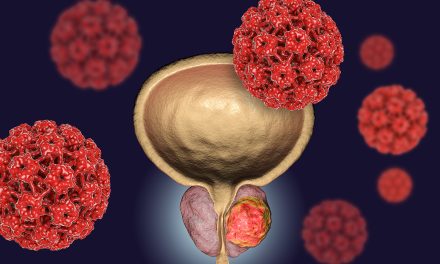Prostate cancer is a serious health concern for men. Getting diagnosed early can make a big difference in treatment options and outcomes. Doctors use several methods to check for prostate cancer.
The main tools for diagnosing prostate cancer are digital rectal exams, PSA blood tests, imaging scans, and prostate biopsies. Each test gives doctors important information. They often use more than one test to get a full picture of a patient’s health.
The diagnosis process can seem scary. But knowing what to expect can help ease worries. This article explains the key methods doctors use to check for prostate cancer. It aims to give men clear information about each step.
Key Takeaways
- Early detection of prostate cancer improves treatment outcomes
- Doctors use physical exams, blood tests, scans, and biopsies to diagnose prostate cancer
- The diagnostic process involves multiple steps to get a complete picture of prostate health
Understanding Prostate Cancer
Prostate cancer develops in the prostate gland, a small organ in the male reproductive system. It can grow slowly or aggressively, making early detection crucial. Learning about the prostate’s anatomy, function, and common symptoms helps men recognize potential issues.
Anatomy of the Prostate
The prostate is a walnut-sized gland located below the bladder and in front of the rectum. It surrounds the urethra, the tube that carries urine and semen out of the body. The prostate has several zones:
- Peripheral zone: Makes up 70% of the gland
- Central zone: About 25% of the gland’s volume
- Transition zone: 5% of the gland, surrounds the urethra
Prostate cancer most often starts in the peripheral zone. As men age, the prostate can enlarge, which may lead to urinary problems.
The function of the Prostate
The prostate plays a key role in male reproduction. Its main functions include:
- Producing prostatic fluid, a component of semen
- Protecting and nourishing sperm
- Helping control urine flow
The prostate makes proteins like prostate-specific antigen (PSA), which helps keep semen liquid. PSA levels in blood can be used to screen for prostate cancer.
Common Symptoms
Early prostate cancer often has no symptoms. As the disease progresses, men may experience:
- Frequent urination, especially at night
- Weak or interrupted urine flow
- Difficulty starting or stopping urination
- Blood in urine or semen
- Pain or burning during urination
- Discomfort in the pelvic area
Not all men with these symptoms have cancer. Other conditions like benign prostate hyperplasia (BPH) can cause similar issues. It’s important to see a doctor for proper diagnosis.
Risk Factors and Prevention
Some men face a higher chance of getting prostate cancer due to their genes or lifestyle. Knowing these risk factors can help with early detection and prevention.
Genetic Risk Factors
Men with a family history of prostate cancer have a higher risk. If a father or brother had it, the risk doubles. African American men also face a greater risk.
Certain genes play a role. BRCA1 and BRCA2 mutations, known for breast cancer, can increase prostate cancer risk too. Other genes like HOXB13 are linked to higher risk.
Age is a key factor. Most cases occur in men over 50. The risk goes up as men get older.
Lifestyle and Environmental Influences
Diet affects prostate cancer risk. Eating lots of red meat and high-fat dairy may increase risk. On the flip side, a diet rich in fruits and vegetables might help prevent it.
Being overweight raises the risk. Regular exercise can lower it. Staying active is good for overall health and may help prevent prostate cancer.
Smoking is bad for prostate health. It can increase the risk of aggressive prostate cancer. Quitting smoking is always a good idea.
Some studies suggest that exposure to certain chemicals might increase risk. This includes things like pesticides and industrial chemicals.
Initial Consultation and Physical Examination
The first steps in diagnosing prostate cancer involve talking with a doctor and undergoing a physical exam. These initial assessments help determine if further testing is needed.
Digital Rectal Exam (DRE)
A digital rectal exam is a key part of the physical examination for prostate cancer. During this exam, a doctor inserts a gloved, lubricated finger into the rectum to feel the prostate gland.
The doctor checks for any lumps, hard areas, or unusual textures on the prostate’s surface. A normal prostate feels smooth and rubbery.
This exam can detect abnormalities in the prostate that may indicate cancer. However, not all prostate cancers can be felt during a DRE.
The DRE is quick and usually causes only mild discomfort. It’s often done along with a PSA blood test to screen for prostate cancer.
While useful, a DRE alone cannot diagnose prostate cancer. Abnormal findings typically lead to more tests.
PSA Testing
PSA testing checks for prostate-specific antigen levels in the blood. It helps doctors detect potential prostate issues early.
Understanding PSA Levels
PSA is a protein made by the prostate gland. Normal PSA levels are usually under 4 nanograms per milliliter (ng/mL) of blood. Higher levels can point to prostate problems, including cancer.
Age affects PSA levels. Older men tend to have higher levels. PSA screening can find prostate cancer before symptoms appear.
Some factors can raise PSA levels besides cancer: • Enlarged prostate • Prostate infection • Recent ejaculation • Vigorous exercise.
Interpreting Test Results
PSA test results are not always clear-cut. A high PSA doesn’t always mean cancer. And a low PSA doesn’t rule it out completely.
Doctors consider many factors when looking at PSA results: • PSA level • How fast PSA levels change • Age • Family history • Other health issues.
If PSA is high, more tests may be needed. These can include: • Repeat PSA test • Digital rectal exam • Prostate biopsy.
PSA testing is not perfect. It can miss some cancers or lead to unneeded worry and procedures. Doctors and patients should talk about the pros and cons of PSA testing.
Imaging Techniques
Doctors use several imaging methods to find and assess prostate cancer. These tools help see inside the body and check for signs of cancer.
Transrectal Ultrasound (TRUS)
TRUS uses sound waves to make pictures of the prostate. A small probe goes into the rectum. It sends out sound waves that bounce off the prostate.
A computer turns these echoes into images. TRUS can show the size of the prostate and any abnormal areas.
Doctors often use TRUS to guide needle biopsies. It helps them place the needles in the right spots. TRUS is quick and does not use radiation.
But TRUS cannot always tell cancer from other prostate problems. It works best with other tests.
MRI Fusion
MRI fusion joins MRI and ultrasound images. It gives a more complete view of the prostate. First, a patient gets an MRI scan. Then, during a TRUS-guided biopsy, the MRI images are fused with real-time ultrasound.
This method helps doctors target suspicious areas better. It can find cancers that might be missed by standard biopsies.
MRI fusion is newer than TRUS alone. It may be more accurate for finding aggressive cancers. But it costs more and takes longer than regular TRUS.
CT and Bone Scans
CT scans use X-rays to make detailed cross-section images of the body. They can show if prostate cancer has spread to nearby organs or lymph nodes.
Bone scans check if cancer has spread to bones. A small amount of radioactive material is put into a vein. It collects in areas of bone damage.
These scans are often used for men with higher-risk prostate cancer. They help decide the best treatment. CT and bone scans use radiation, so doctors use them carefully.
Biopsy Procedures
Prostate biopsies are key tests for diagnosing cancer. Doctors use different methods to take tissue samples from the prostate gland. These samples are then checked for cancer cells.
TRUS-Guided Biopsy
TRUS stands for transrectal ultrasound. This common biopsy method uses sound waves to make pictures of the prostate. The doctor puts a thin needle through the rectum wall into the prostate. They take about 10-12 small tissue samples.
The procedure usually takes 10-15 minutes. Patients may feel some discomfort. Doctors often give local anesthesia to reduce pain.
There are some risks with TRUS biopsies:
- Bleeding
- Infection
- Trouble peeing
But these issues are usually mild and don’t last long.
MRI-Guided Biopsy
MRI-guided biopsies use magnetic resonance imaging to find suspect areas. This method can find hard-to-see tumors that TRUS might miss.
The doctor looks at MRI scans to plan where to take samples. They may use special software to aim the biopsy needle. This helps get samples from the right spots.
MRI-guided biopsies can be done in two ways:
- In-bore: The patient is inside the MRI machine during the biopsy
- Fusion: MRI images are combined with real-time ultrasound
These biopsies are very precise. They may find more high-risk cancers than standard methods.
Template-Guided Biopsy
Template-guided biopsies use a grid to map out the prostate. The doctor puts needles through holes in the grid to take samples. This method helps cover the whole prostate evenly.
The grid fits over the area between the scrotum and anus. The doctor uses ultrasound to see the prostate. They then take many samples in a set pattern.
This method can find cancers that other biopsies might miss. It’s often used when:
- Earlier biopsies didn’t find cancer, but doctors still suspect it
- Doctors need to check the whole prostate carefully
Template biopsies may cause more discomfort than other methods. They also take longer to do.
Analyzing Biopsy Samples
Doctors use two main methods to study prostate biopsy samples. These methods help them figure out how serious the cancer is and plan the best treatment.
Gleason Score
The Gleason score is a key tool for grading prostate cancer. It looks at how the cancer cells appear under a microscope.
Doctors give the cancer two grades from 1 to 5. Grade 1 means the cells look almost normal. Grade 5 means they look very abnormal.
The two most common grades are added together to get the Gleason score. For example, 3+4=7.
Scores of 6 or less mean the cancer is likely to grow slowly. Scores of 7 suggest moderate risk. Scores of 8 to 10 indicate the cancer may grow and spread quickly.
The Gleason score helps doctors decide on the best treatment plan for each patient.
Genomic Testing
Genomic testing examines the genes in cancer cells. It can give more info about how the cancer might behave.
These tests look at groups of genes in the cancer cells. They can predict:
- How fast the cancer might grow
- How likely it is to spread
- If certain treatments might work well
Some common genomic tests for prostate cancer include:
- Oncotype DX
- Polaris
- Decipher
Genomic testing can help doctors and patients make choices about treatment. It’s especially useful when other test results are unclear.
Not all men with prostate cancer need genomic testing. Doctors consider many factors when deciding if it’s needed.
Advanced Diagnostic Tests
New tests help doctors find prostate cancer more easily. These tests look for signs of cancer in urine or blood samples. They can give more details about a man’s cancer risk.
PCA3 Test
The PCA3 test checks urine for a gene linked to prostate cancer. This test is more specific for prostate cancer than older tests. It can help decide if a biopsy is needed.
Doctors do this test after a digital rectal exam. The exam makes prostate cells shed into the urine. Then, the urine is tested for PCA3.
A high PCA3 score means a higher chance of having prostate cancer. This test works well even if a man has had a negative biopsy before.
TMPRSS2
TMPRSS2 is a gene change found in many prostate cancers. Tests can find this gene change in urine samples. Like PCA3, this test is done after a digital rectal exam.
The test looks for the TMPRSS2 gene fusion. This fusion happens when two genes join together. It’s common in prostate cancer but rare in normal prostate tissue.
Finding this gene change can help doctors decide if a biopsy is needed. It can also give clues about how a cancer might grow. Some studies show it may help predict if a cancer will spread.
Staging of Prostate Cancer
Staging helps doctors determine how far prostate cancer has spread. It guides treatment decisions and gives an idea of outlook. The TNM system is the main method used for prostate cancer staging.
TNM Staging System
The TNM system looks at the tumor (T), lymph nodes (N), and metastasis (M). For the T stage, doctors check if the cancer is only in the prostate or has grown outside. They use digital rectal exams, imaging tests, and biopsies to assess this.
The N stage shows if the cancer has spread to nearby lymph nodes. Imaging scans or lymph node biopsies can detect this spread.
M stage tells if the cancer has spread to distant parts of the body. Bone scans are often used, as prostate cancer tends to spread to bones first.
Doctors combine the T, N, and M results to give an overall stage from I to IV. Stage I is early cancer confined to the prostate. Stage IV means the cancer has spread widely.
PSA levels and Gleason scores also factor into staging. Higher numbers for both usually mean more advanced cancer.
Treatment Options Overview
Prostate cancer treatment depends on several factors. These include cancer stage, patient age, and overall health. Doctors and patients work together to choose the best approach.
Some common treatment options for prostate cancer are:
- Active surveillance
- Surgery
- Radiation therapy
- Hormone therapy
- Chemotherapy
Active surveillance involves closely monitoring the cancer without immediate treatment. It’s often used for slow-growing tumors.
Surgery removes the prostate gland. This is called a prostatectomy. It can be done through open surgery or less invasive methods.
Radiation therapy uses high-energy beams to kill cancer cells. It can be external or internal (brachytherapy).
Hormone therapy reduces male hormones in the body. This can slow or stop cancer growth.
Chemotherapy uses drugs to kill cancer cells. It’s typically used for advanced prostate cancer.
New treatments are always being developed. These include targeted therapy and immunotherapy.
Each treatment has its own benefits and risks. Patients should discuss all options with their doctor to make an informed decision.
Navigating the Diagnosis Journey
Getting a prostate cancer diagnosis can be overwhelming. Patients often face tough choices and complex medical information. Support from loved ones and clear communication with doctors are key.
Support Systems
A strong support system is vital for men facing prostate cancer. Family and friends can offer emotional comfort and help with daily tasks. Many find it helpful to talk to others who have been through similar experiences.
Support groups can be a great resource. They let patients share concerns and tips with others who understand. Some men prefer one-on-one chats with a cancer survivor.
Hospitals often have social workers or patient navigators. These pros can guide patients through the healthcare system. They may help find resources for financial aid or transportation to appointments.
Communicating with Healthcare Providers
Clear talks with doctors are crucial. Patients should prepare questions before visits. It’s okay to ask for simpler explanations of medical terms.
Taking notes or bringing a friend to appointments can help. This ensures important info isn’t missed. Patients should speak up about their concerns and treatment preferences.
Shared decision-making is key. Doctors explain options, and patients share their values and goals. Together, they choose the best path forward.
Patients may want a second opinion. This is normal and can help confirm the diagnosis or treatment plan. Most doctors support this step.
Frequently Asked Questions
Prostate cancer diagnosis involves various tests and procedures. These methods help detect, confirm, and classify the disease accurately.
What are the standard screening tests for prostate cancer?
The main screening tests for prostate cancer are the prostate-specific antigen (PSA) test and digital rectal exam (DRE). The PSA test measures a protein level in the blood, while the DRE allows a doctor to feel the prostate for abnormalities.
These tests are often used together for more comprehensive screening. However, they are not definitive and may lead to further testing if results are abnormal.
What is the most precise diagnostic test for prostate cancer?
A prostate biopsy is the most accurate test for diagnosing prostate cancer. This procedure involves taking small tissue samples from the prostate and examining them under a microscope.
The biopsy can confirm the presence of cancer cells and provide information about the cancer’s aggressiveness. It is typically performed if initial screening tests suggest a possibility of cancer.
What are the initial symptoms that might indicate prostate cancer?
Early prostate cancer often has no symptoms. As the disease progresses, some men may experience:
- Difficulty urinating or weak urine flow
- Frequent urination, especially at night
- Blood in urine or semen
- Pain or discomfort in the pelvic area
These symptoms can also be caused by other conditions, so it’s important to consult a doctor for proper evaluation.
What imaging technology is preferred for detecting prostate cancer?
Magnetic Resonance Imaging (MRI) is a preferred imaging method for detecting prostate cancer. It provides detailed images of the prostate and surrounding tissues.
MRI can help identify suspicious areas and guide biopsies. Other imaging techniques like ultrasound and CT scans may also be used in certain situations.
How is prostate cancer staged and classified?
Prostate cancer is staged using the TNM system:
- T: Extent of the primary tumor
- N: Spread to nearby lymph nodes
- M: Presence of distant metastasis
The Gleason score is used to classify the aggressiveness of the cancer based on how abnormal the cells look under a microscope. This information helps determine the best treatment approach.
What are the established methods for confirming a prostate cancer diagnosis?
Confirming a prostate cancer diagnosis typically involves:
- PSA test and DRE as initial screening
- Prostate biopsy for definitive diagnosis
- Imaging studies like MRI for additional information
These methods, used in combination, provide a comprehensive assessment. They help doctors accurately diagnose prostate cancer and determine its extent and aggressiveness.
Conclusion
Prostate cancer diagnosis uses several key methods. Doctors often start with a digital rectal exam and PSA blood test. These tests can show if more testing is needed.
If the results are concerning, a biopsy may be done. Biopsy schemes with 12 cores are common. This allows doctors to check different parts of the prostate for cancer cells.
Newer tests like MRI scans help doctors find the right spots to biopsy. This makes the diagnosis more accurate. Genetic tests on biopsy samples can also give more information.
Early detection is important. More men have been diagnosed since PSA testing became common. This has led to earlier treatment for many.
Doctors use these tools together to diagnose prostate cancer. Each test gives useful information. Combined, they help create the best treatment plan for each patient.















